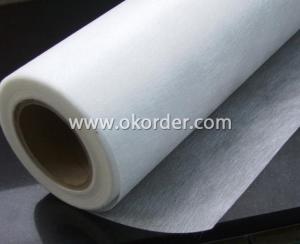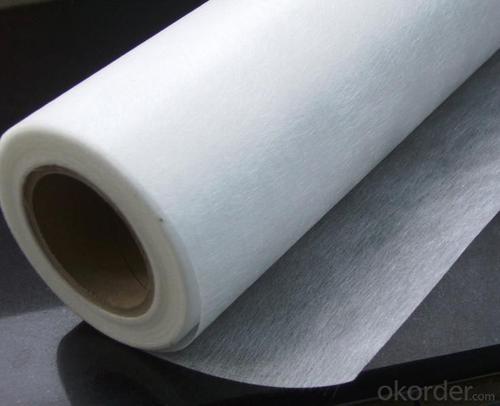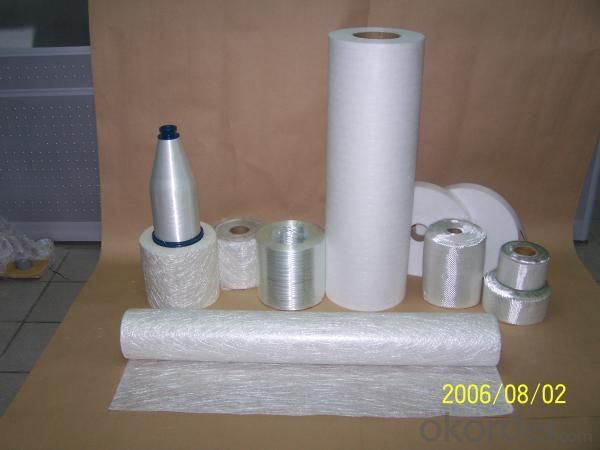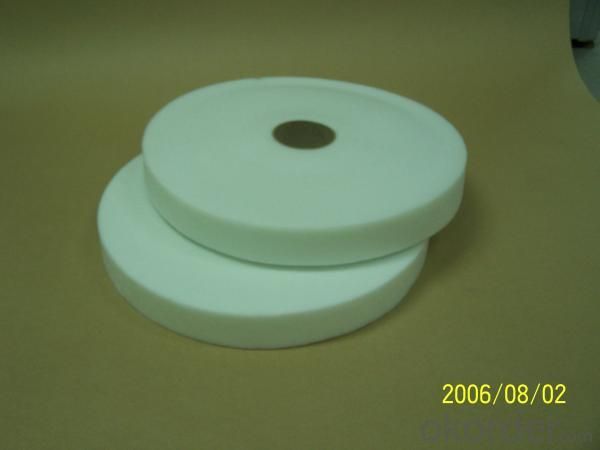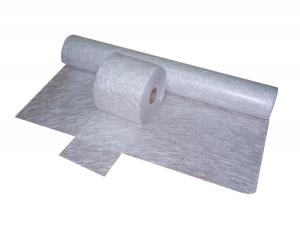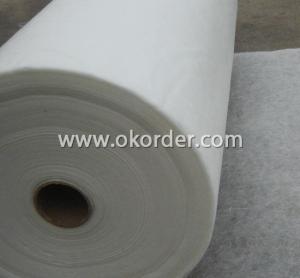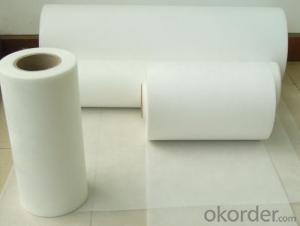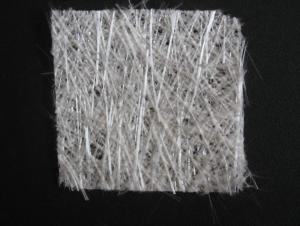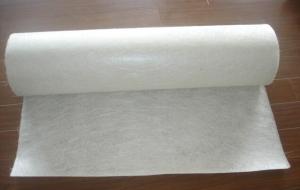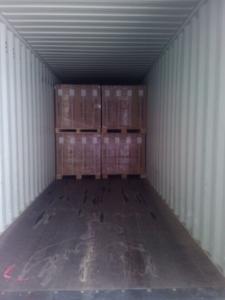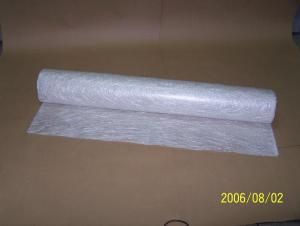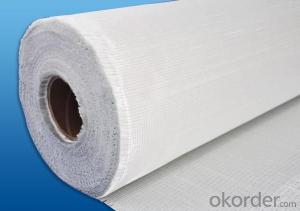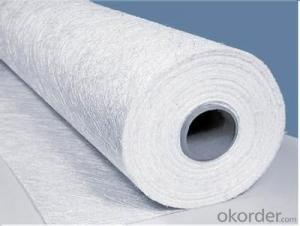C-Glass Fiberglass Mat Tissue
- Loading Port:
- China Main Port
- Payment Terms:
- TT or LC
- Min Order Qty:
- 2000Square Meter m²
- Supply Capability:
- 600000 Square Meter Per Month m²/month
OKorder Service Pledge
OKorder Financial Service
You Might Also Like
Packaging & Delivery of C-Glass Surface Tissue
Packaging Detail: | standard width: 1000mm/1040mm/1270mm, standard length: 300m usually packed in pp bag and then in cartons. Loading quantity is around 75000m2/20ft container or 189000m2/40" container. |
Delivery Detail: | 15 days after receipt of down payment |
Specifications of C-Glass Surface Tissue
1. fiberglass surfacing tissue
2.corrosion resistance
3. low binder content
4. good molding properties
5. Lloyd's approved
Introduction of C-Glass Surface Tissue
Fiberglass surface tissue is mainly used in the surface layers of FRP products. There are two types, winding series and hand lay-up series.
Winding series are mainly used on pipe and tank winding process. It can improve the product surface property on corrosion resistance, comprehensive strength, seepage resistance and longer service life.
Hand lay-up series are chiefly used in the products with complicated geometric curve. It has the advantages of good pattern fitness, quick resin permetion. It can raise the intensity and corrosion resistance of products
Characteristics of C-Glass Surface Tissue
Surface felt used in the fiberglass products, good permeability make resin instantly penetrate into, and eliminate the bubble and white stains phenomenon, it good effect for any sexual complex shape of products and mold surface, can cover up the cloth grain, improve surface finish and the permeability, and at the same time enhance interlaminar shear strength and surface toughness, make the products improve corrosion resistance, is manufacture high quality glass fiber reinforced plastic mold and the products of the essential supplies.
Application | Density (g/m2) | Moisture Content (%) | Binder Content (%) | Wetting time (%) | Tensile Strength MD(N/5CM) |
Winding | 20 | <0.2 | 7 | <8 | ≥20 |
30 | 6 | <10 | ≥25 | ||
50 | 6 | <16 | ≥40 | ||
Hand Lay UP | 30 | 7 | <10 | ≥20 | |
40 | 6 | <15 | ≥25 | ||
50 |
Product features of C-Glass Surface Tissue
The glass mat for FRP surface has a fiber dispersion, smooth surface, soft hand-feeling, low binder content , fast resin impregnation and good mould obedience which make it most applicable to other FRP molding processes such as press moulding , spray-up, centrufugal rotating moulding.
1 C-glass tissue used in machine or continuous operation paste hand made of fiberglass products (FRP), the plate, the pipeline, groove, cans, yacht, tub products.
2 E-glass fiberglass felt used for thin epoxy after COINS and electrical insulation products.
3 Alkali glass fiber thin felt used in battery of isolation, waterproofing roof, plasterboard is the panel, plastic floor and chemical pipe lined with leakage, corrosion quality materials.
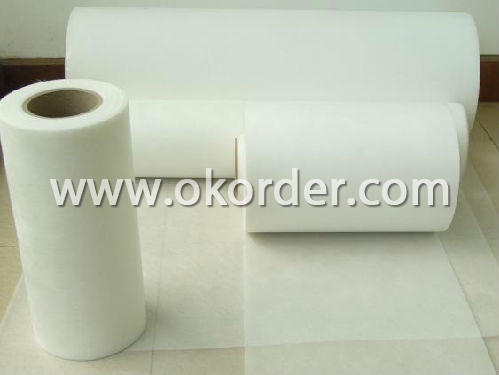
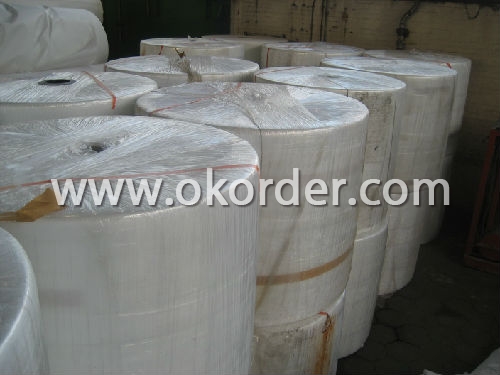
- Q: How is fiberglass mat tissue used in the production of pipes and tanks?
- Due to its unique properties, fiberglass mat tissue is widely used in the manufacturing of pipes and tanks. This material is ideal for reinforcement and insulation purposes. By combining fine glass fibers with a binder, a thin, flexible, and porous material is created. In the production of pipes, fiberglass mat tissue serves as a reinforcement layer. It enhances the structural integrity and strength of the pipe. Typically, it is placed between multiple layers of resin, such as polyester or epoxy, during the manufacturing process. This reinforcement provides added strength and rigidity to the pipe, making it more resistant to external pressures, impact, and corrosion. Furthermore, fiberglass mat tissue improves the insulation properties of pipes. Its porous nature allows it to trap air within its structure, creating a layer of thermal insulation. This insulation helps maintain the temperature of the fluid or gas within the pipe. As a result, it reduces heat loss and energy consumption. Similarly, in the production of tanks, fiberglass mat tissue plays a crucial role in reinforcing and insulating the tank structure. It is used as a layer between the tank walls and the resin matrix, providing reinforcement and reducing the risk of structural failure. The tissue also acts as a thermal insulator, helping to maintain the desired temperature inside the tank. Overall, fiberglass mat tissue is an essential component in the manufacturing of pipes and tanks. Its reinforcement properties enhance structural integrity, while its insulation properties improve energy efficiency and temperature control. This makes fiberglass mat tissue a versatile and reliable material for various industries, including oil and gas, chemical processing, water treatment, and many others.
- Q: Is fiberglass mat tissue resistant to fading?
- Yes, fiberglass mat tissue is resistant to fading.
- Q: Can fiberglass mat tissue be used in high-temperature applications?
- No, fiberglass mat tissue is not suitable for high-temperature applications.
- Q: How is fiberglass mat tissue used in the production of chemical reactors?
- Due to its exceptional properties, fiberglass mat tissue is commonly utilized in the production of chemical reactors. Composed of randomly oriented glass fibers bonded together with a binder material, this tissue is ideal for constructing these reactors. A primary application of fiberglass mat tissue in chemical reactors is as a reinforcement material. It is typically applied to the inner surfaces of the reactor to enhance its structural integrity. The combination of glass fibers and binder creates a durable and strong layer capable of withstanding harsh conditions within the reactor, such as high temperatures and corrosive chemicals. Moreover, fiberglass mat tissue acts as a protective barrier against chemical attack. Traditional materials often degrade when exposed to aggressive substances found in chemical reactors. However, the chemical resistance of fiberglass mat tissue makes it highly suitable for such environments. It effectively prevents corrosive chemicals from penetrating the reactor walls, ensuring the long-lasting reliability of the equipment. Additionally, fiberglass mat tissue offers thermal insulation properties to chemical reactors. This is particularly crucial in processes where temperature control is vital. The insulation capabilities of the tissue help maintain the desired temperature within the reactor, preventing heat loss or gain that could negatively impact the efficiency and consistency of chemical reactions. In conclusion, fiberglass mat tissue plays a vital role in the production of chemical reactors by reinforcing the structure, providing chemical resistance, and offering thermal insulation. Its unique properties make it an excellent choice for ensuring the durability, safety, and optimal performance of chemical reactors in various industrial applications.
- Q: Is fiberglass mat tissue resistant to UV degradation?
- The level of UV resistance in fiberglass mat tissue may vary depending on the specific type and quality. Generally, it is resistant to UV degradation to some extent. UV degradation occurs when materials are exposed to prolonged UV radiation from the sun, causing discoloration, brittleness, and reduced strength. Manufacturers often add additives and coatings to fiberglass mat tissue to provide some level of UV resistance. These additives and coatings protect the fibers from the harmful effects of UV radiation. However, it is important to note that the level of UV resistance can differ between manufacturers and products. To ensure the highest level of UV resistance, it is recommended to select fiberglass mat tissue specifically designed for outdoor applications and tested for UV stability. Additionally, regular maintenance and inspections can help identify any signs of UV degradation and allow for timely repairs or replacements if needed.
- Q: Can fiberglass mat tissue be used for repairing fiberglass kayaks?
- Yes, fiberglass mat tissue can be used for repairing fiberglass kayaks. It is commonly used as a reinforcement material in fiberglass repairs due to its strength and ability to conform to curved surfaces.
- Q: How does fiberglass mat tissue perform in terms of moisture vapor resistance?
- Fiberglass mat tissue generally performs well in terms of moisture vapor resistance. The material itself is not permeable to moisture, meaning it acts as a barrier to prevent the passage of water vapor. This characteristic makes fiberglass mat tissue suitable for applications where moisture control is important, such as in roofing or insulation. The moisture vapor resistance of fiberglass mat tissue can be further enhanced by using it in conjunction with other materials, such as vapor barriers or moisture-resistant coatings. These additional layers can provide an extra level of protection against moisture infiltration, improving the overall performance of the fiberglass mat tissue in terms of moisture vapor resistance. However, it is important to note that the specific moisture vapor resistance of fiberglass mat tissue can vary depending on its thickness, density, and composition. Thicker and denser fiberglass mats generally offer higher moisture vapor resistance compared to thinner and less dense ones. Additionally, the presence of any manufacturing additives or coatings can also affect the material's moisture vapor resistance properties. In summary, fiberglass mat tissue is known for its good moisture vapor resistance capabilities, but its exact performance in this regard can be influenced by various factors. It is advisable to consult product specifications or manufacturers' recommendations to determine the specific moisture vapor resistance of a particular fiberglass mat tissue product.
- Q: Is fiberglass mat tissue resistant to UV radiation?
- No, fiberglass mat tissue is not resistant to UV radiation.
- Q: Can fiberglass mat tissue be used in marine applications?
- Certainly! Fiberglass mat tissue finds its utility in the realm of marine applications. It is a lightweight and flexible substance that is extensively employed in the construction and repair of boats. Its commendable strength and durability render it suitable for marine environments that entail exposure to water, salt, and other severe conditions. It is frequently employed as a reinforcement layer in the fabrication of boat hulls, decks, and other structural constituents. Its incorporation augments the strength and rigidity of composite materials employed in marine applications, thus bolstering their overall performance and lifespan. Furthermore, fiberglass mat tissue exhibits resistance to corrosion and possesses favorable water resistance properties, rendering it an apt choice for marine applications.
- Q: What are the potential health and safety concerns associated with working with fiberglass mat tissue?
- There are several potential health and safety concerns when it comes to working with fiberglass mat tissue. First and foremost, the presence of tiny glass fibers in fiberglass means that they can become airborne when the material is cut, sanded, or disturbed. Inhaling these fibers can lead to respiratory problems like coughing, wheezing, and difficulty breathing. Prolonged exposure to fiberglass dust can also result in lung diseases such as fibrosis or even lung cancer. Furthermore, direct contact with fiberglass mat tissue can cause skin irritation, resulting in itching, redness, and rashes. The sharp glass fibers can also cause small cuts or punctures, which can lead to infection if not properly treated. In addition, fiberglass is a lightweight material that can easily become airborne and settle on surfaces. This increases the risk of ingestion or contamination of food and drinks. Swallowing fiberglass particles can irritate the digestive system, resulting in symptoms like nausea, vomiting, and abdominal pain. To ensure the well-being of workers, it is important to take proper precautions when working with fiberglass mat tissue. This includes wearing personal protective equipment such as gloves, safety glasses, and respiratory masks to minimize exposure to airborne fibers. Adequate ventilation and dust control measures should also be implemented to prevent the accumulation of fiberglass dust in the work area. Regular cleaning and maintenance should be carried out to keep the work environment free from fiberglass particles. Additionally, workers should receive education on the correct handling and disposal of fiberglass materials to minimize the risk of contamination. Overall, while fiberglass mat tissue is widely used, it is crucial to be aware of the potential health and safety concerns associated with its handling and to take necessary precautions to minimize the risk of exposure.
1. Manufacturer Overview
| Location | Hebei,China |
| Year Established | 2008 |
| Annual Output Value | Above US$20 Million |
| Main Markets | Mid East;Western Europe:South Asian |
| Company Certifications | ISO9001:2000;ISO14001:1996;GB/T28001:2001 |
2. Manufacturer Certificates
| a) Certification Name | |
| Range | |
| Reference | |
| Validity Period |
3. Manufacturer Capability
| a) Trade Capacity | |
| Nearest Port | Tianjin |
| Export Percentage | 80% |
| No.of Employees in Trade Department | 350 People |
| Language Spoken: | English;Chinese;Korean |
| b) Factory Information | |
| Factory Size: | Above 100,000 square meters |
| No. of Production Lines | Above 12 |
| Contract Manufacturing | OEM Service Offered;Design Service Offered |
| Product Price Range | Average |
Send your message to us
C-Glass Fiberglass Mat Tissue
- Loading Port:
- China Main Port
- Payment Terms:
- TT or LC
- Min Order Qty:
- 2000Square Meter m²
- Supply Capability:
- 600000 Square Meter Per Month m²/month
OKorder Service Pledge
OKorder Financial Service
Similar products
Hot products
Hot Searches
Related keywords
